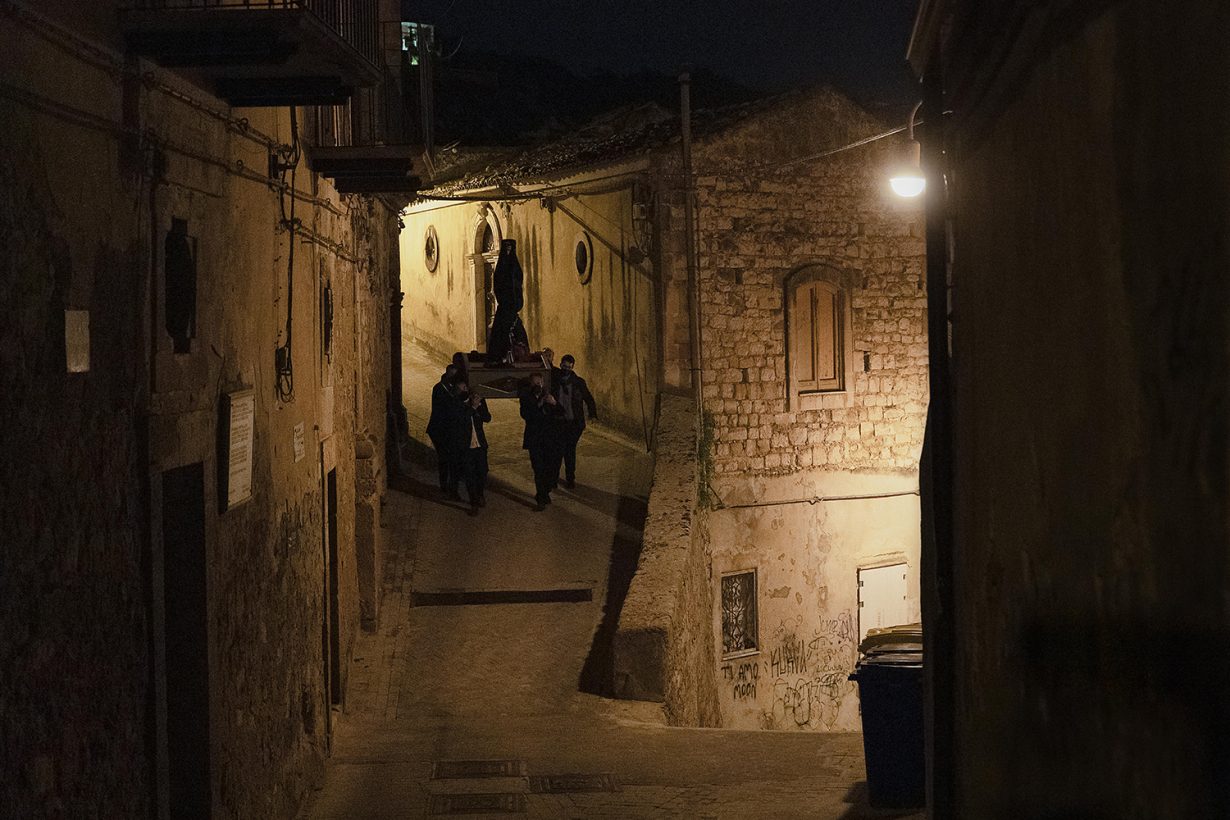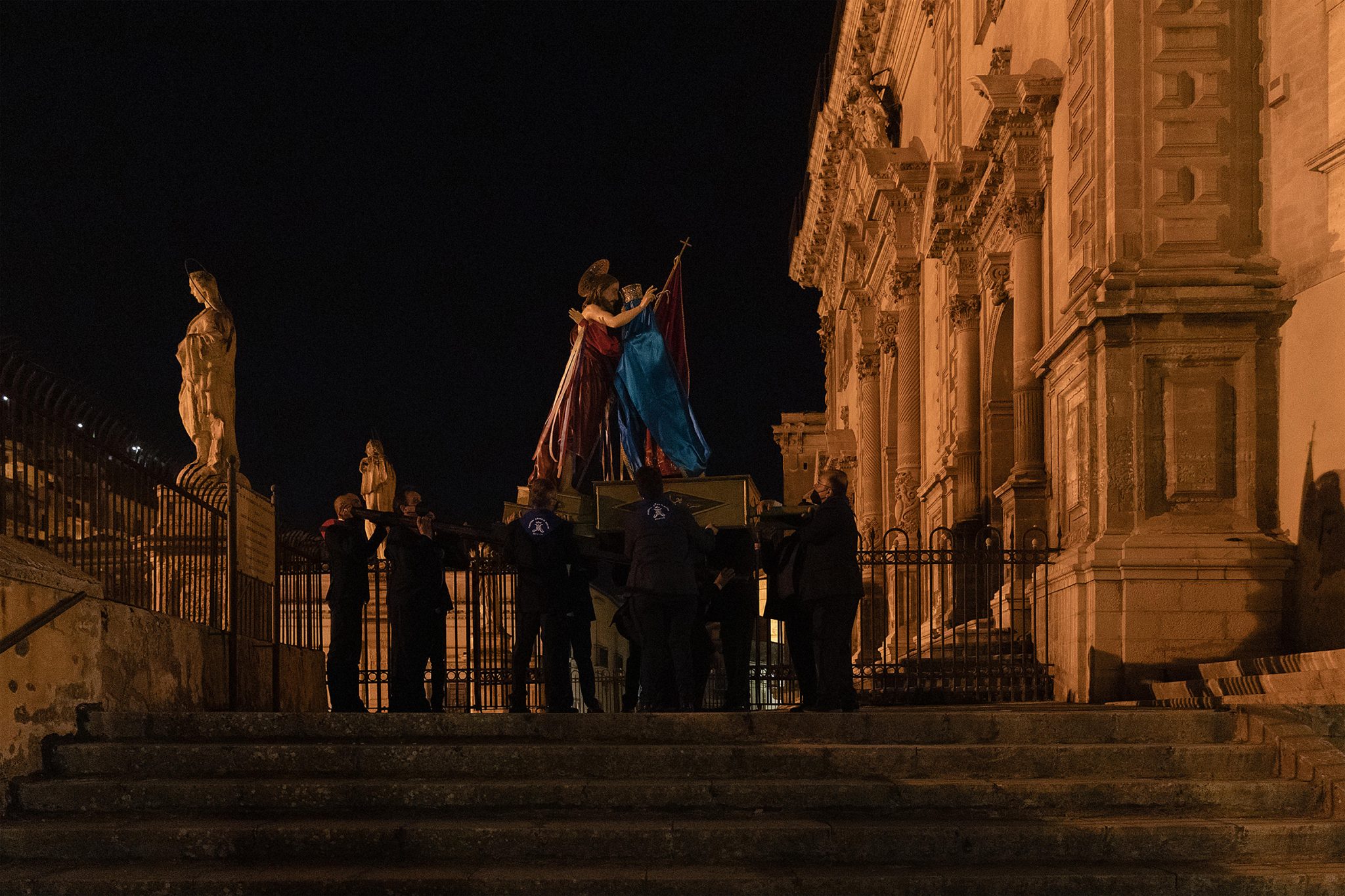Laura Raicovich on Adrian Paci’s film U’ncuontru and learning how to be together again in an age of perpetual crisis
Living in anticipation of reemergence has become a constant sensation. It felt like we were just learning how to be together again, to rend from our systems the isolation imposed by pandemic quarantines – now challenged by the instability rocking Europe. The war in Ukraine, on top of the conflicts that have raged for years (hot, cold, lukewarm, between states, within states) in Latin America, the US, the Middle East and beyond – not to mention the eternal return of COVID-19 variants – betrays an age permanently marked by violence and volatility.
Isolation can be experienced in strange ways: a friend living in the Netherlands recently mentioned to me that he felt a great gulf between Europe and the US these days – something that I too feel but hadn’t articulated like this. It seems too obvious to say that while technology enables us to communicate in extraordinary ways, it is no substitute for the physical, embodied presentness of being together. And it is this state of hyperconnectivity that produces a permanent anticipation of potential ends and re-beginnings. I struggle with thinking about what might be next; perhaps you do too.
In the early days of the Russian attacks on Ukraine, I scoured the news, looking for something I could wrap my arms around, some logic or anchor for what or how things might unfold. And yet the chaos on the ground kept me guessing. There’s hope to be found, of course. Movements for solidarity and mutual aid continue. They are hyperlocal and transcontinental. But the question of how we think through our own role – to work towards conditions that might engender a sliver of greater justice – remains (a dilemma that many arts institutions have grappled with in recent weeks, if not years, for better or worse).

It is in this frame of mind that I watched the artist Adrian Paci’s film U’ncuontru (2021). The work was conceived at the height of the pandemic in 2020 and revolves around a highly specific ritual enacted in the Sicilian city of Modica each year on Easter Sunday. I was fortunate to experience this event several years before the pandemic began. As a recovering Catholic, it was a beautiful thing to witness: a social evocation of the Easter story played out via life-sized wooden sculptures of Mary and Jesus in a performance that evokes their humanity as historical figures, and as mother and son, more than the mother of God and the son of God.
In the ritual, the statues are mounted on platforms carried by teams of local men. Each begins at opposite ends of the central boulevard in Modica, in the centre of which there is a piazza. Thousands of Sicilians and visitors flood the square and the boulevard, only making way when the figures must pass. Mary is covered in a black shroud with golden embellishments. Jesus is nude but for his loincloth, having just risen from the dead. They see one another from a distance and Mary’s cloak slips off as her arms rise (she is a puppet, operated from beneath the platform). Doves fly out from Mary’s sky-blue garment; multicoloured ribbons flow from their feet. She sees her son and they approach the central piazza. Their wooden bodies bend towards one another in an awkward embrace and they ‘kiss.’ In the local dialect this ritual is called the Vasa Vasa, or Kiss Kiss. While of course, believers are deeply moved, I was too, witnessing a mother who thought her son was dead, find him alive.

For obvious reasons, the Vasa Vssa was not held in 2020. However, Paci was able to convince church officials to perform an unusual version of the Vasa Vasa in 2021: this time, in the middle of the night. This is when U’ncuontru takes place. Paci’s film opens with an emptied Modica. Is this a city abandoned by humans? Is it a scene from hundreds of years ago? Then two motorbikes come into view as the camera pans through the vacant, nighttime streets. The sounds are ambient. A wrapped figure appears, an object being transported by men wearing hard-soled shoes that make a distinctive clacking sound against the stone paving. The men carrying the figure are reminiscent of pallbearers, and it is from their point of view that we see the action; their focus is on their charge rather than on where they are going. Hushed voices are heard; their burden creaks.
The chiaroscuro of the streetscape lit by electric lanterns gives the narrow passageways a particularly Baroque sensibility. Alongside these painterly aesthetics and the deep stillness of a city at night, is the laboured breathing of the bearers of the shrouded object. At approximately the midpoint of the film, a clock tower appears – the waiting is nearly over. The point of view shifts from the front of the figure to behind her form. Birds can be heard, calling the sun to shine in the darkness. The sky is purple-black.

In front of a church, Jesus stands, held up by his group of men. They jostle him slightly as he moves into position. The cloaked figure remains mysterious until she ‘sees’ Jesus. And the shawl falls, revealing Mary, her arms raised; the embrace and the kiss are enacted. Birds sing as the empty streets take in this pantomime of love and reconnection. The mother reunites with the son she thought she had lost, and they proceed back into the narrow streets of the city, as empty as ever. The men carrying the statues struggle with their task as they navigate the narrow alleys, inclines, and darkness of the early morning. The effort is palpable.
This work grounds me. It speaks to the struggle to remain sensitive when the rawness of reality seems too much. It shifts my focus to the necessity of locating joy and hope in the darkness – it helps us see that survival sometimes happens in the darkest hours. Paci’s film proposes that death may not be an end, and reemergence might not look like what we hope it will be.
Adrian Paci’s U’ncuontru will be on view at Green-Wood Cemetery, Brooklyn, New York, at a special installation and screening in the Chapel, 1-17 April 2022. Find out more here.
Laura Raicovich is a writer and curator based in New York City. Her most recent book is Culture Strike: Art and Museums in an Age of Protest (Verso 2021).
